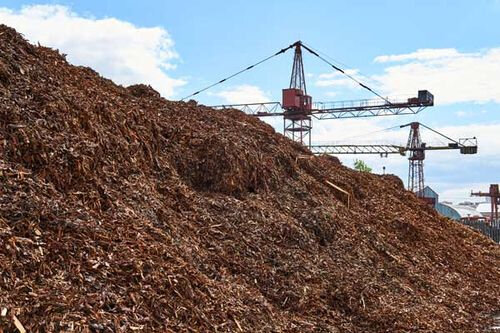SAF’s Billion-Ton Question

The US Department of Energy’s 2023 Billion-Ton Report found that the country has 1.5 billion tons of biomass available for sustainable aviation fuel (SAF) production, exceeding the goal of 1 billion tons. The report, released in early 2024, informs policy and resource assessments for bioenergy applications, including the Sustainable Aviation Fuel Grand Challenge, which aims to meet 100% of US aviation fuel needs by 2050 (approximately 35 billion gallons). The study, co-authored by 54 contributors from federal agencies, national labs, universities, and industry stakeholders, provides a conservative analysis of biomass resources, quantity, spatial distribution, and economic accessibility.
This spring, the U.S. Department of Energy air-dropped a report that should give the nascent sustainable aviation fuel (SAF) industry a massive crate of confidence. With the release of the 4th installment of a decades-old study designed to highlight the available volume of biomass in the U.S. suitable for bioenergy and bioproduct production, the DOE answered a big question about the future of SAF: Is there enough biomass to produce it commercially, long-term, at scale?
“We did not set out to find a billion tons of biomass,” said Mark Elless, technology manager for the Bioenergy Technologies Office of Renewable Carbon Resources at DOE, when asked about the objective of the latest 2023 Billion-Ton Report released in early 2024. In fact, the large team that worked on the Biomass Resource Availability Study actually found that the U.S. has closer to 1.5 billion tons of biomass available for use as feedstock for a wide range of applications.
“The BT23 report can be used to inform policy and resource assessments for bioenergy applications,” Elless said, “such as meeting the volumetric goals of the Sustainable Aviation Fuel Grand Challenge.”
Valerie Sarisky-Reed, director of the Bioenergy Technologies Office (BETO), talked directly about the implications of the report in relation to that SAF Grand Challenge.
“The goal of meeting 100% of U.S. aviation fuel needs has been set for 2050, and that’s projected to be approximately 35 billion gallons,” Sarisky-Reed said. “The Billion-Ton Report shows that this resource can indeed be met sustainably.”
Apparent SAF Focus
The BT23 is designed to be policy and end-use agnostic, according to Elless. But during the report-release webinar outlining the main takeaways, three of the four presenters spoke to what the report means for SAF production in their opening statements. The only speaker not to address SAF spoke instead about the tools and data accessibility options available to navigate and utilize the report.
The BT23 was built upon the biomass report’s last version, released in 2018, and represents an advancement in the understanding of biomass resources including quantity, spatial distribution and economic accessibility, Elless explained. “Each report adds additional feedstock analysis, better modeling and the latest available input data,” he said.
The robust report was co-authored by 54 individual contributors from six federal agencies, five national labs, five universities and 14 industry stakeholders, according to BETO.
Both Sarisky-Reed and Matt Langholtz, a natural resource economist from Oak Ridge National Laboratory, emphasized that the analysis is conservative.
Source Link : https://ethanolproducer.com/articles/safs-billion-ton-question















